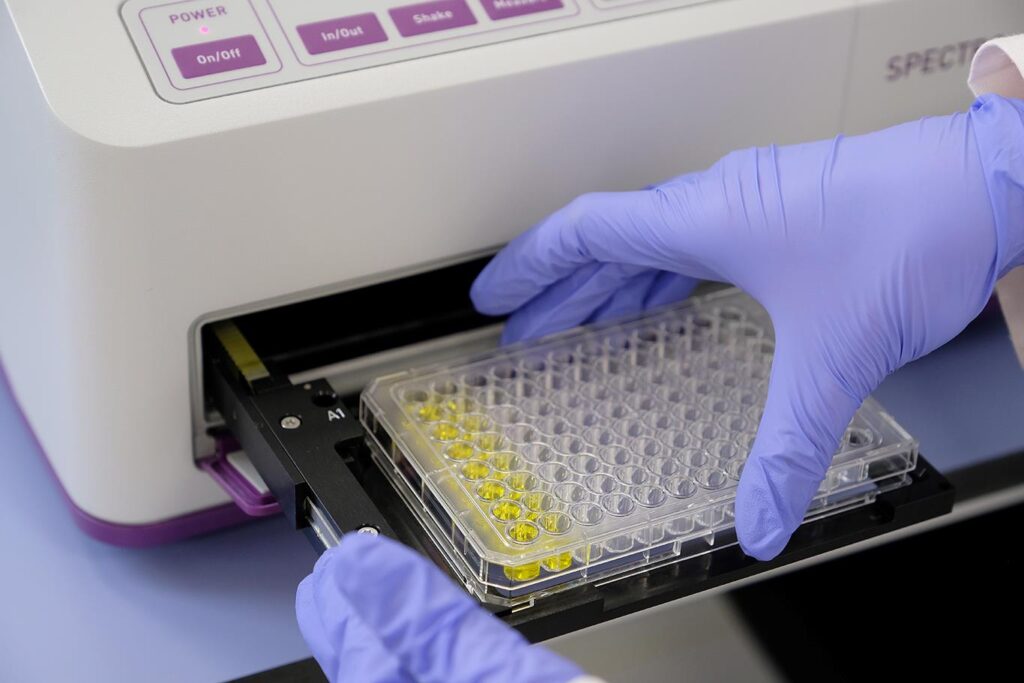The data from this study, promoted by CIBERDEM, the URV and the IISPV, could open the door to new preventive and therapeutic strategies

A new study has revealed new evidence on the role of growth differentiation factor 15 (GDF15), a protein produced in situations of physiological stress, in both metabolic dysfunction-associated steatotic liver disease (MASLD) and atherosclerotic cardiovascular disease. The research, published in the International Journal of Molecular Sciences, has been carried out by a research team led by CIBERDEM in which the Rovira i Virgili University (URV) and the Institute for Health Research Pere Virgili (IISPV) have also participated.
The team analyzed GDF15 levels in 156 patients with metabolic disorders and found, through nuclear magnetic resonance imaging, that this stress response cytokine is linked to liver damage and to an advanced atherogenic profile, a combination of factors in the blood that increase the risk of cardiovascular disease. Specifically, they observed an increase in the amount of very low-density lipoprotein particles and their cholesterol and triglyceride content. In addition, elevated levels of GDF15 were associated with increased thickness of a marker of subclinical atherosclerosis.
“There is increasing evidence linking GDF15 with metabolic dysfunction-associated steatotic liver disease and cardiovascular risk. However, the possible relationship between circulating levels of GDF15 and key features of MASLD that predispose to atherosclerotic cardiovascular disease is not fully understood,” explains Ricardo Rodríguez-Calvo, a researcher at the Lipids and Arteriosclerosis Unit (URV-IISPV) and CIBERDEM.
The study delved into the role of circulating levels of the GDF15 protein in hepatic metabolic disorders and atherosclerotic disease: “GDF15 was associated with liver damage and inflammatory markers, and increased the likelihood of hepatic steatosis in a group of metabolic patients,” says Josefa Girona, researcher at the Lipids and Arteriosclerosis Unit (URV-IISPV) and CIBERDEM.
After 10 years of follow-up, it was observed that patients who developed atherosclerotic cardiovascular disease had significantly higher baseline levels of the GDF15 protein than those who did not develop the pathology. This, according to the researchers, could suggest that this protein plays a key role in the mechanisms linking MASLD to cardiovascular risk.
The authors believe that these findings “provide new insights into the relationship between MASLD and cardiovascular risk, focusing on the role of GDF15 in both pathologies. This could open the door to new strategies for the prevention and treatment of metabolic and cardiovascular diseases”. However, they also point out that further molecular studies are needed to clarify the causal role of the GDF15 protein in disease-associated cardiovascular risk.
Bibliographic reference: Girona, J., Guardiola, M., Barroso, E., García-Altares, M., Ibarretxe, D., Plana, N., Ribalta, J., Amigó, N., Correig, X., Vázquez-Carrera, M., Masana, L., & Rodríguez-Calvo, R. (2025). GDF15 Circulating Levels Are Associated with Metabolic-Associated Liver Injury and Atherosclerotic Cardiovascular Disease. International Journal of Molecular Sciences, 26(5), 2039. https://doi.org/10.3390/ijms26052039